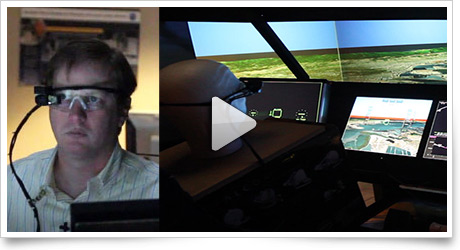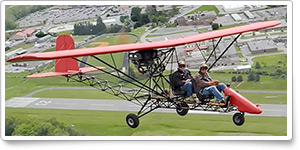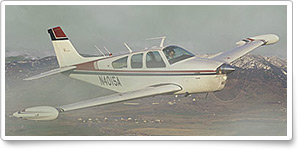| ||||||
| eyeglass-mounted synthetic vision |
| |||||
| Click here for this week’s custom content. | |
FEATUREDNASA takes synthetic vision to next level
CLARIFICATION: In the May 11 issue of AOPA ePilot, we incompletely described a decision by European aviation officials to effectively end the longstanding practice of honoring certain pilot certificates earned in the United States. The decision affects only European Union citizens and permanent residents. | |
GA NewsUptick in activity, but little sign of recoveryArgus International reported a slight increase in business aircraft activity (IFR flights) in April, compared to the same month in 2011, but there’s little sign that activity or sales will soon return to pre-recession levels. Read more >> Bombardier, Cessna announce new jetsAnalyst Richard Aboulafia described the jet market as “an absence of pessimism,” and that, given the past four years, is seen as an improvement. In this environment, two manufacturers have launched three new models. Cessna’s super mid-size Citation Longitude jet is aimed at the upper end of the market. Bombardier Aerospace introduced the $11.5-million Learjet 70 and $13-million Learjet 75 that both have ranges greater than 2,000 nautical miles and cruise speeds up to Mach 0.75. Read more >> UFO a flying mistress LightSquared files for bankruptcyLightSquared filed for bankruptcy under Chapter 11 on May 14. The wireless network based on mobile-satellite technology that was found to overpower GPS navigation signals filed the petition two weeks after it negotiated an extension for making a payment on its debt. Read more >> Device enables panel-mounted Garmin to send data to iPadsAs further proof that iPads are taking over the general aviation world, Guardian Avionics recently launched a unit that will send GPS position wirelessly to an iPad, and in the case of Airguide Publications’ Flight Guide iEFB application, send a flight plan as well. Read more >> ‘Naked’ airplane plies West Virginia skies Tennessee aviation legend diesEvelyn Bryan Johnson, the legendary Tennessee flight instructor and designated pilot examiner better known to her many students over the years as “Mama Bird,” died May 10 after a period of declining health. She was 102. Johnson logged 57,635.4 flight hours and administered some 9,000 practical tests. She built her flight time giving instruction and conducting checkrides. Read more >> Youth aviation initiative picking up steamWith an emphasis on science, technology, engineering, and math classes in the education system, and a growing realization of the declining pilot population and predicted pilot shortage, more aviation camps are popping up around the country. Read more >> Airshow rules: Safety first, show business second
Fourth HondaJet joins test fleetHonda Aircraft Co. marked a milestone toward certification of its HondaJet May 4 with the first flight of its fourth FAA-conforming test aircraft, the company announced at the European Business Aviation Convention and Exposition in Geneva, Switzerland. Read more >> Cub summer: Maryland couple to fly J-3 to Lower 48Meredith Tcherniavsky and Dana Holladay of Rockville, Md., plan to launch July 4 on a two-month adventure that will take them 8,000 miles in their 1938 Piper J-3 Cub. Read more >> Pilot, Citation V speed travel for sick childrenGreg Greenbaum uses his Cessna Citation V jet to fly volunteer missions with Atlanta-based Angel Flight Soars. According to Executive Director Jeanine Chambers, Greenbaum, who has been a pilot since 1995, is one of her most dedicated volunteers, flying 25 missions since joining Angel Flight Soars in 2005, including 10 in 2012 alone. Read more >> Skytrain of D-Day drop honors troops, evokes memories AeroLED Sunspot approved for certificated aircraftPilots and owners of certificated aircraft can now install the AeroLED Sunspot 36HX landing light, thanks to an FAA parts manufacturer approval (PMA). The company says a blanket supplemental type certificate (STC) is on the way. According to AeroLEDs, the 36HX will last 50,000 hours, meaning it will likely be the last landing light you ever buy. And at 3,600 lumens, it's significantly brighter than a standard bulb. A pulse feature is also available, either in a multi-light setup or as a single light. Each 36HX retails for $449. Strong launch sustains pilot club 50 years laterOne instructor, one Piper J-3 Cub, 27 solos, and more than 100 students in the first 12 months. The Elkins Pilots Club started with a bang 50 years ago and has continued ever since. The club celebrated the milestone anniversary May 12 with a fly-in at the Elkins-Randolph County-Jennings Randolph Field in West Virginia. Read more >> Kestrel seeks to tap into Wichita workforceOften dubbed the “Air Capital of the World,” Wichita, Kan., has seen thousands of layoffs among general aviation manufacturers in recent years. An area with so many skilled workers with extensive aviation manufacturing knowledge is a prime target for aircraft companies that are hiring. Kestrel Aircraft Co. sought to tap into that base by hosting a job fair in Wichita. Read more >> | |||||||||||||||||||||||||||||||||||||||||||||||||
Flight Instructor Refresher Clinics | Air Safety Institute Safety Seminars | |||||||||
For a complete schedule, see AOPA Online. Can’t make it in person? Sign up for the CFI Refresher Online. |
Topics vary—for details and a complete schedule, see AOPA Online. | |||||||||
ADVOCACY
Is that an F-16 off your wing? Beware TFRs near DC, Chicago
 If you are flying near Chicago or the greater Washington, D.C., metropolitan area between May 18 and 21 and spy an F-16 or a Black Hawk off your wing, you’re in big trouble. The FAA has issued notams restricting flight in both areas for the G8 and NATO summits. Security is heightened because of the numerous world leaders who will be attending both events, and pilots should exercise extreme caution when flying near either area. Read more and watch video of a practice intercept >>
If you are flying near Chicago or the greater Washington, D.C., metropolitan area between May 18 and 21 and spy an F-16 or a Black Hawk off your wing, you’re in big trouble. The FAA has issued notams restricting flight in both areas for the G8 and NATO summits. Security is heightened because of the numerous world leaders who will be attending both events, and pilots should exercise extreme caution when flying near either area. Read more and watch video of a practice intercept >>
FAA report: GA an asset to nation
Over the last century, general aviation airports have evolved from unpaved strips to a vital network of aviation hubs that contributed $38.8 billion to the economy in 2009, says a new FAA study. The study introduced a new set of airport classifications to chronicle GA's role in the aviation system. Read more >>
Regulation modified on Class D taxi operations
A final rule still open for comment will codify as regulation a practice already implemented by the FAA: Abbreviated taxi clearances are no longer given. Read more >>
FAA revises flight-data blocking rules
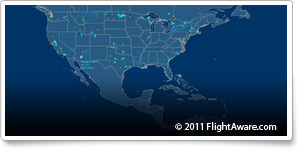 After a mandate from Congress last year, the FAA had to reverse a policy of publicly disseminating private aircraft flight data; now it is going a step further by publishing new procedures that would give owners and operators broader control over their flight information’s disclosure. The agency will accept comments on its notice of proposed process until June 8. AOPA is reviewing the proposal and will submit comments. Read more >>
After a mandate from Congress last year, the FAA had to reverse a policy of publicly disseminating private aircraft flight data; now it is going a step further by publishing new procedures that would give owners and operators broader control over their flight information’s disclosure. The agency will accept comments on its notice of proposed process until June 8. AOPA is reviewing the proposal and will submit comments. Read more >>
Colorado events recognize general aviation
Colorado Gov. John Hickenlooper declared June Colorado General Aviation Appreciation Month in a proclamation that recognized GA’s contributions to the state’s economy. The official month of appreciation for GA will include numerous events marking Colorado Aviation Week June 4 to 8. According to the Colorado Division of Aeronautics’ 2008 Economic Impact Study, Colorado’s GA airports contribute $1.36 billion and nearly 15,500 jobs, with an annual payroll exceeding $540 million, to the state economy.
Nebraska recognizes GA value
With a stroke of the governor's pen on May 16, Nebraska joined a growing list of states proclaiming support for—and recognizing the value of—general aviation. Read more >>
ASN volunteer turned county leader
AOPA’s Airport Support Network volunteers are engaged in their airport communities in a lot of different ways. One ASN volunteer took a big step and went well beyond the airport to take on a countywide leadership role: Al Ambrosini, volunteer at Joseph A. Hardy Connellsville Airport in Connellsville, Pa., proudly included his aviation credentials and pilot community support as part of his campaign for Fayette County commissioner in southwest Pennsylvania in 2011. Read more >>
Join the Airport Support Network today
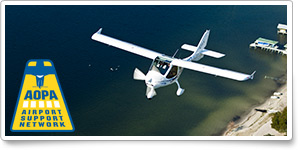 Ensuring the health and vitality of your airport is up to you—incompatible development and economic and political pressures can restrict your flying. Every day, close to 2,500 Airport Support Network (ASN) volunteers work with AOPA headquarters to help save their airports, but we need more. Below is a link to a list of the airports where an ASN volunteer could make a difference.
Ensuring the health and vitality of your airport is up to you—incompatible development and economic and political pressures can restrict your flying. Every day, close to 2,500 Airport Support Network (ASN) volunteers work with AOPA headquarters to help save their airports, but we need more. Below is a link to a list of the airports where an ASN volunteer could make a difference.
To nominate yourself or an associate to be a volunteer, visit AOPA Online.
To learn more about the Airport Support Network, visit ASN Online.
AOPA Close to Home
Survey: Santa Monica airport not 'key' issue
Changes urged for Iowa military plan
Incursions put focus on Arizona airspace awareness
Southeast pilots sought for disaster drill
Member Benefits
AOPA Airports iPhone app now AOPA FlyQ
Have you downloaded AOPA’s latest flight planning application for the iPhone? The AOPA Airports iPhone app has been upgraded to AOPA FlyQ. AOPA FlyQ still offers the airport directory information you rely on, but also provides you with aviation weather and flight planning with auto-routing capabilities—free with your membership. Members with AOPA Airports apps for Windows Mobile or BlackBerry devices, powered by WingX, are unaffected and need take no action. Read more >>
Hot topics
One new program that has created a lot of buzz among AOPA members is the new Pilot Protection Services. Members enrolled in the program benefit from the advice and assistance available through AOPA’s Legal Services Plan, as well as access to a variety of other services that can help you protect both your pilot and medical certificates. Read more >>
AOPA 2012 Tougher than a Tornado Husky Sweepstakes
 Bruce’s Custom Cover for Tornado Husky
Bruce’s Custom Cover for Tornado Husky
Thanks to Bruce’s Custom Covers, the AOPA 2012 Sweepstakes Tougher than a Tornado Husky has some added protection from the elements. Read more >>
AOPA Career Opportunities
Ever dream of turning your passion for aviation into a career? We’re looking for a vice president of information systems; human resources generalist; insurance services administrative coordinator; registration, housing, and meeting planner; vice president–Center to Advance the Pilot Community; aviation technical writer; vice president of strategy and philanthropic operations; program manager–products; project manager of online products; director of new market development; and associate editor–Web/ ePilot. To learn more about other AOPA career opportunities, visit AOPA Online.
Community
Picture PerfectAOPA’s online photo gallery allows you to upload your own aviation photography as well as view, rate, and comment on others’ photos. Your favorite aviation images from AOPA Pilot are still available online through this new gallery. Take a look, and submit your own photos! | | |
Engage in AviationCheck out user-submitted events from your region. To include an event or to search all events in the calendar, visit AOPA Online. AOPA does not endorse the events listed below, nor have ePilot editors edited the submissions. AOPA assumes no responsibility for events listed.
| |
| |
QUIZ ME!Here’s a question asked by an AOPA member who contacted our aviation services staff through the AOPA Pilot Information Center. Test your knowledge.
Question: What are minimum safe and minimum sector altitudes (MSA)?
Answer: A minimum safe altitude is published on instrument approach procedure charts. A minimum sector altitude is a subset of the minimum safe altitude that will "provide at least 1,000 feet of obstacle clearance within a 25-mile radius of the navigation facility upon which the procedure is predicated." The area can be sectored into as many as four separate areas. The divisions between sectors are based on the bearing to the primary navigation aid for the approach. Normally, an MSA is only used in an emergency, but it is an important part of an approach briefing in case its use becomes necessary.
Got a question for our aviation services staff? The AOPA Pilot Information Center is a service available to all members as part of the annual dues. Call 800/USA-AOPA (800/872-2672), or email to [email protected]. |
| |
| |
| |
| | ||||
| ePilot Editor: Sarah Brown | Contributors: Alyssa Miller Jim Moore Jill W. Tallman Warren Morningstar Alton K. Marsh | | Production Team: Melissa Whitehouse Siobhan Byrne Lezlie Ramsey Mitch Mitchell William Rockenbaugh | Advertise in ePilot: |
| Member Tools: Send feedback | ePilot Archive © 2012 Aircraft Owners and Pilots Association | 421 Aviation Way Frederick, MD 21701 | Phone 800/USA-AOPA | Fax 301/695-2375 | ||||




